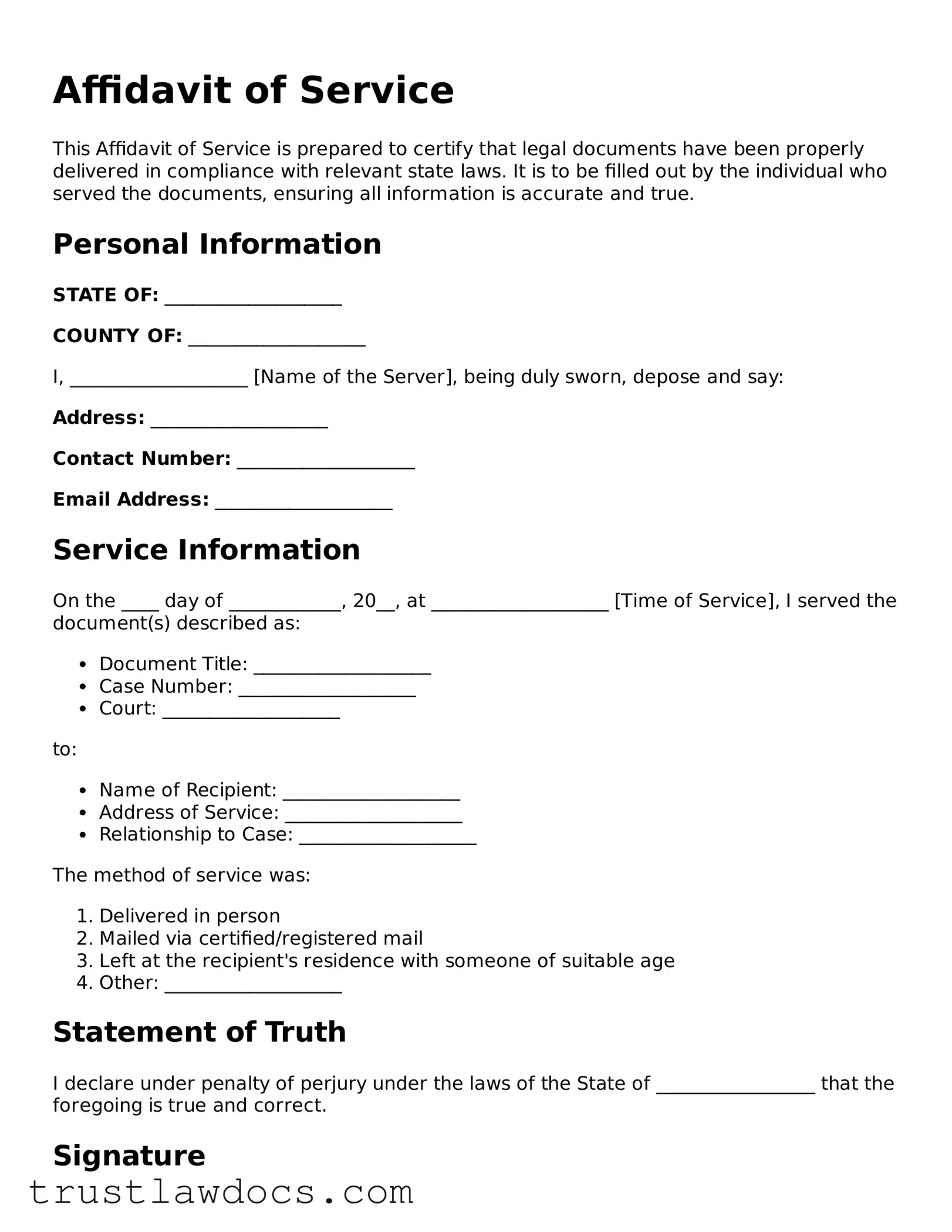What is an Affidavit of Service?
An Affidavit of Service is a sworn statement, usually notarized, confirming that a legal document was properly delivered to a party involved in a legal proceeding. It serves as proof of service, ensuring that all parties have been appropriately informed of legal actions or requirements.
When is an Affidavit of Service needed?
This document is typically required after legal documents, such as summons, complaints, or subpoenas, have been served on a party. Its necessity arises from the need to establish an official record that notifies all parties have been fairly alerted to legal proceedings, deadlines, or judgments.
Who can serve legal documents and complete an Affidavit of Service?
Legal documents must be served by an individual who is not a party to the case and is typically over the age of 18. Depending on jurisdiction, process servers, law enforcement officers, or court officials may carry out this role. Once the documents are served, the server fills out the Affidavit of Service, providing details about when, where, and how the documents were delivered.
What information is contained in an Affidavit of Service?
This document includes specifics such as the date and time of service, the method of delivery (e.g., in person, by mail, or via a third party), and the identity of the recipient. It might also describe the recipient's reaction, if necessary, and includes the server's signature, attesting under oath to the accuracy of the information provided.
How is an Affidavit of Service filed?
After completion, the Affidavit of Service is filed with the court handling the legal case. This process typically requires submitting the original document to the court clerk, who will then enter it into the case record. Filing this affidavit promptly is crucial, as it often influences deadlines and court schedules.
Is notarization required for an Affidavit of Service?
Yes, in most jurisdictions, the Affidavit of Service must be notarized to verify the identity of the server and the authenticity of their signature. This step adds a layer of trustworthiness to the affidavit, ensuring that the document is legally binding and the information within is accurate to the best of the server’s knowledge.
What happens if an Affidavit of Service is not filed or is incorrect?
Failure to properly file an Affidavit of Service can delay legal proceedings, as the court may not proceed until it has confirmation that all parties were notified. If the affidavit contains errors, it might be challenged by the opposing party, potentially leading to a requirement to re-serve the documents and submit a new affidavit. This could also impact the credibility of the serving party in legal proceedings.
Can an Affidavit of Service be contested?
Yes, an Affidavit of Service can be contested by the party claiming they did not receive the served documents. To challenge it, the said party must provide substantial evidence to the court demonstrating the likelihood that service did not occur as documented. The court will then review the claim, which can lead to hearings or investigations to ascertain the truth.
Where can I find a template for an Affidavit of Service?
Templates for an Affidavit of Service can often be found online through legal services or state court websites. It’s crucial to obtain a template that complies with the specific requirements of the jurisdiction where the case is filed. Legal professionals or court clerks can also provide guidance on creating or obtaining an appropriate affidavit form.
